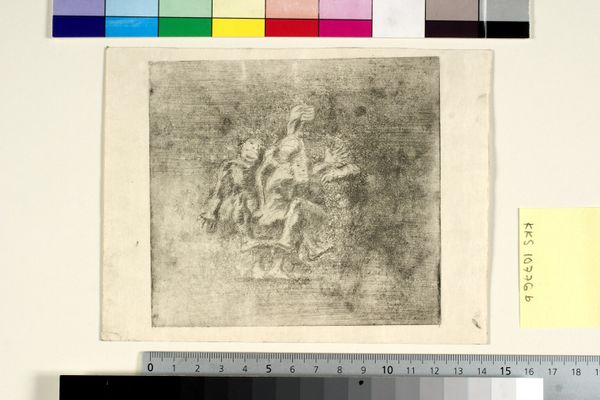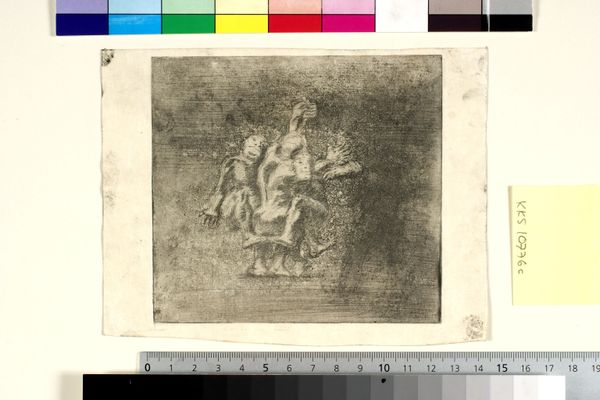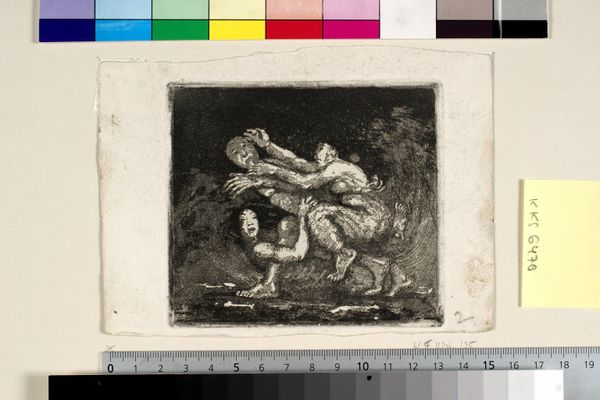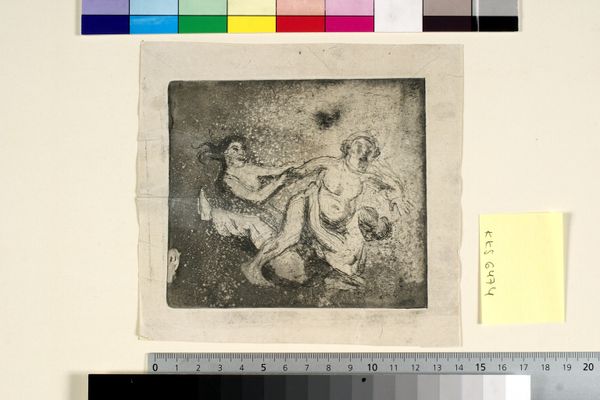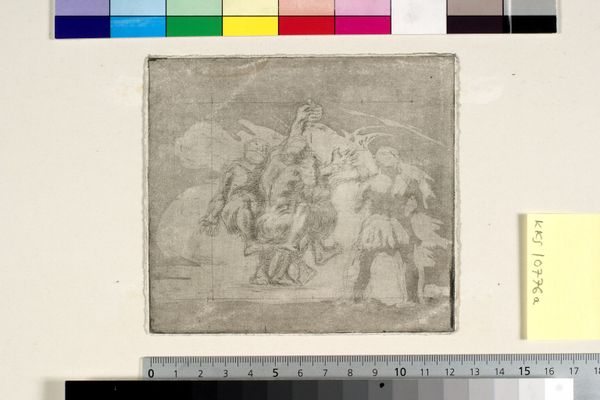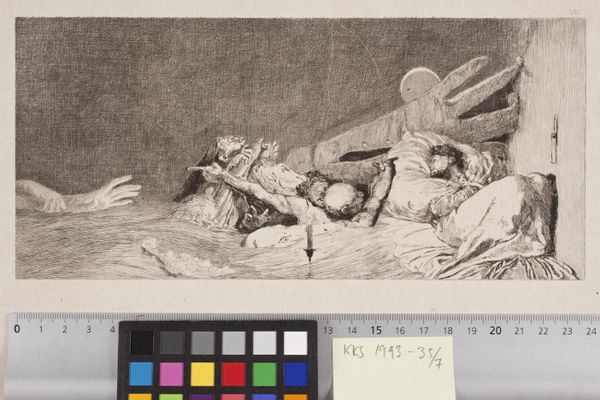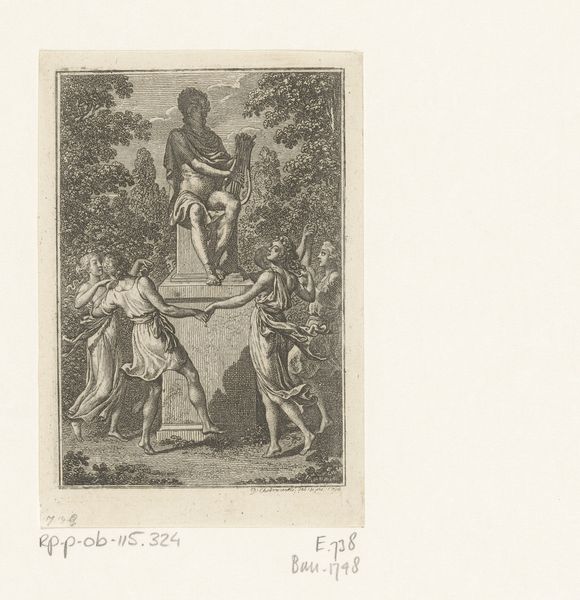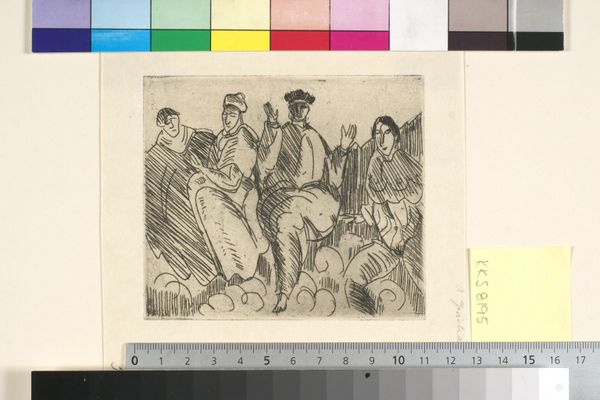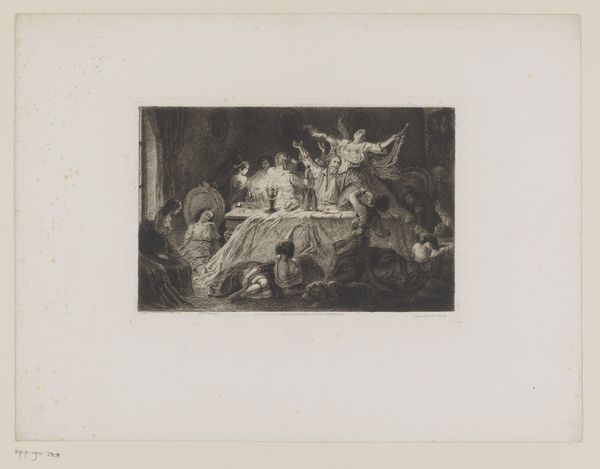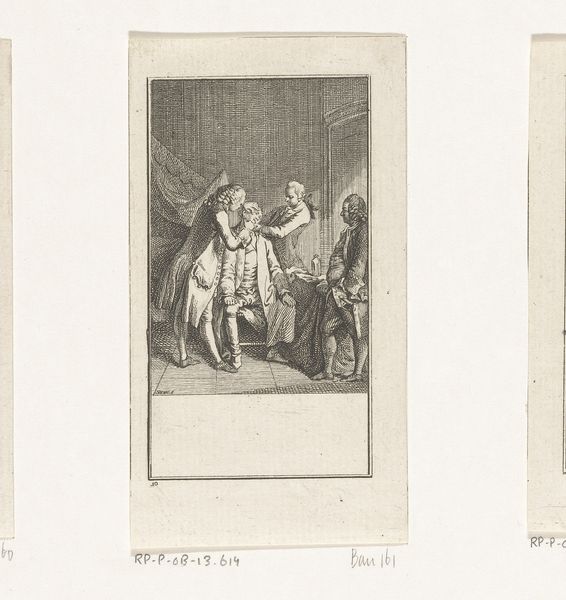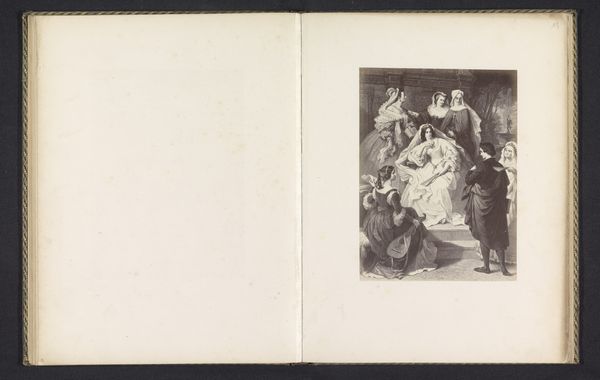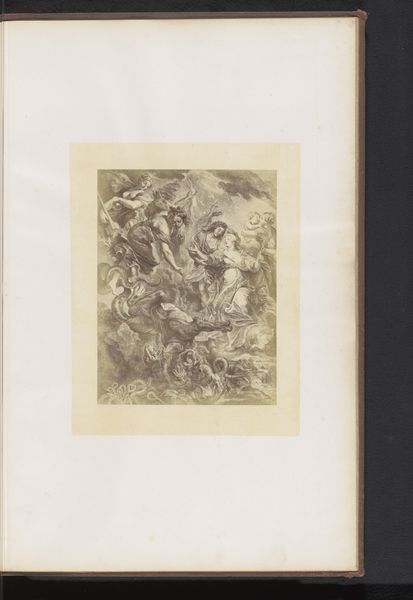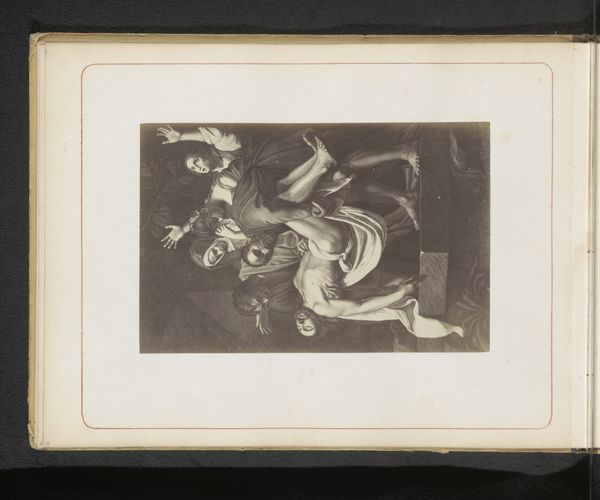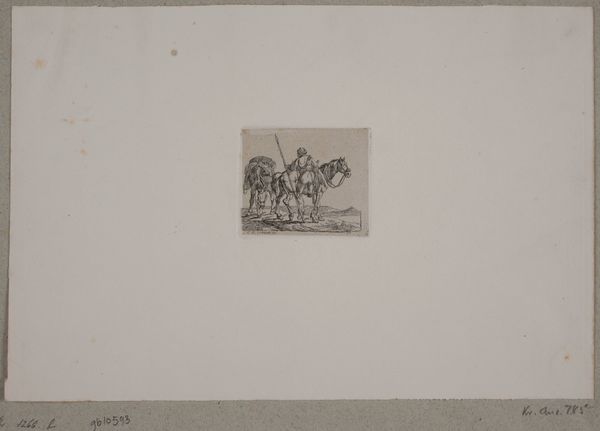
drawing, print, etching
#
drawing
#
art-nouveau
#
narrative-art
# print
#
etching
#
symbolism
Dimensions: 85 mm (height) x 92 mm (width) (plademaal)
Editor: This is "Macbeth and the Witches," an etching by Oluf Hartmann, created in 1902. It feels very theatrical, almost like a stage design, with a definite contrast between the lone figure and the group confronting him. What can you tell me about its symbolism and how it reflects the historical context? Curator: Hartmann's work invites us to consider the broader implications of power, prophecy, and gender as depicted in Shakespeare's play. Given the period's artistic fascination with folklore, do you see this portrayal of the witches as a comment on female agency? Editor: I hadn't thought of it that way, but I suppose depicting them as grotesque could also be interpreted as a fear of female power. Is it an exaggeration of stereotypes, a patriarchal attempt to diminish female authority? Curator: Precisely. The Art Nouveau influence could almost be seen as cloaking the disturbing power dynamics in seductive visual language, inviting reflection on art's own role in social commentary. Editor: It's strange to consider how beauty and prejudice could co-exist like that. So, Hartmann isn’t just illustrating a scene but critiquing societal power structures too, including gender and class issues implicit in the narrative? Curator: Indeed. Look closely – Macbeth is encountering figures of supposed disorder in society. Who defines "disorder," and who benefits from labeling it so? The viewer is invited to consider if Macbeth is free to choose, or merely manipulated. Editor: This really reshapes my understanding. It's not just a scene from Macbeth; it's an observation of power and control. Curator: And perhaps a challenge for us to recognize such imbalances when we see them replicated today.
Comments
No comments
Be the first to comment and join the conversation on the ultimate creative platform.
